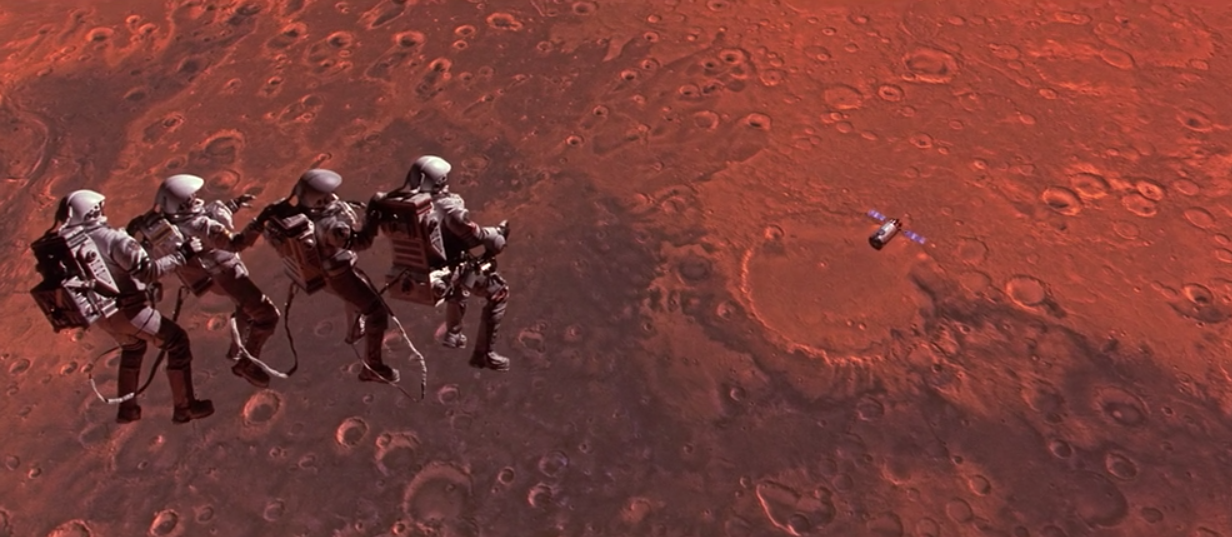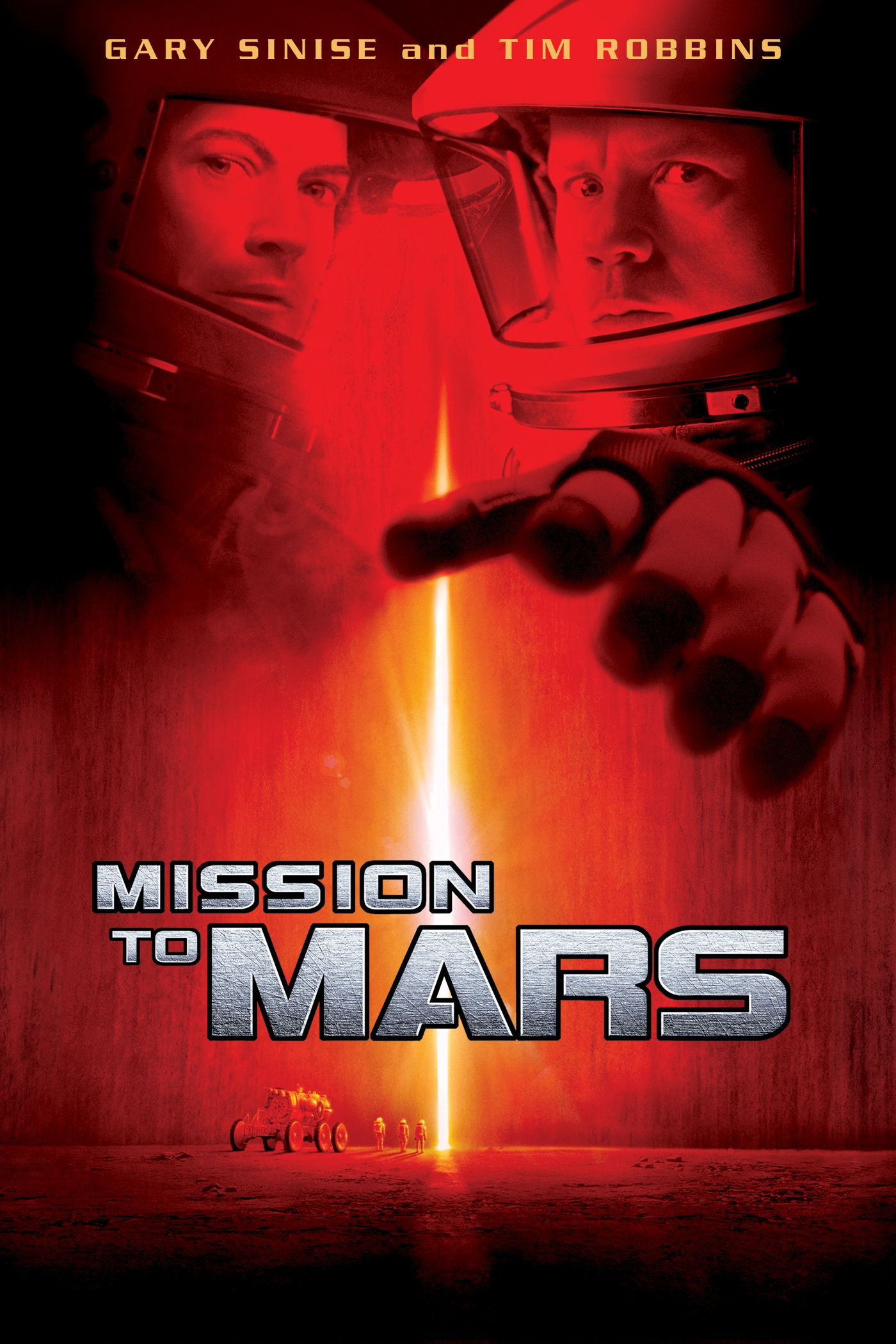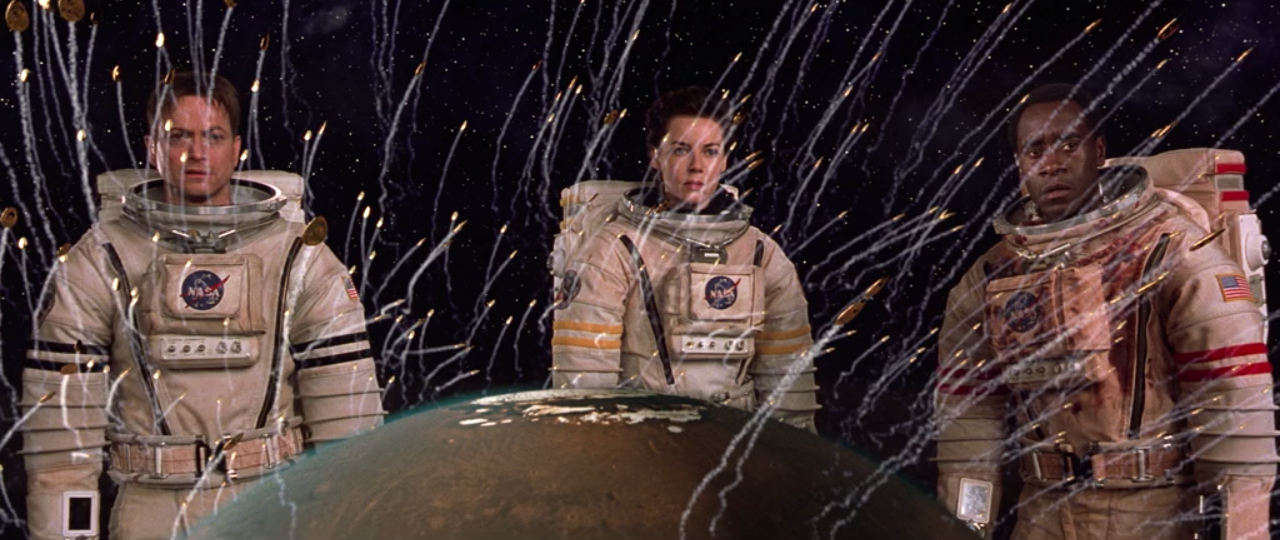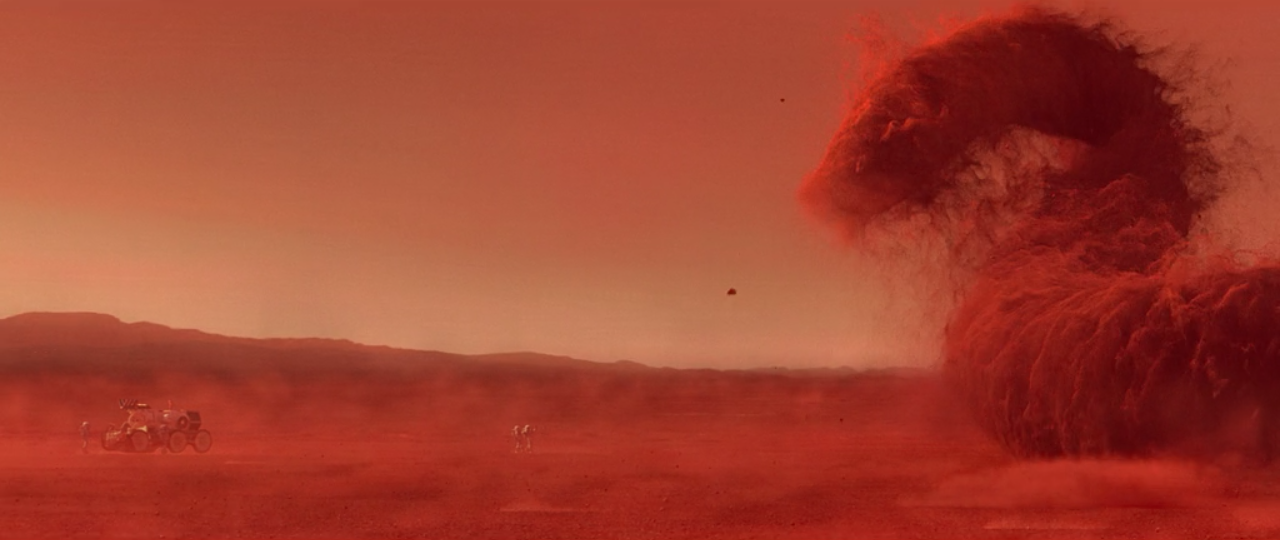

“The genetic difference between men and apes is only three percent. But that three percent gave us Einstein, Mozart…”
“…Jack The Ripper.”
For about three quarters of an hour right in the middle of Mission to Mars, Brian De Palma is almost entirely in his element and the film holds the viewer in a death grip. Two suspenseful sequences mark out this section: one involving a puncture to the hull of a salvage crew’s spaceship and the subsequent patch-up job, the other a four-person untethered spacewalk that ends in tragedy. The latter in particular is brilliantly conceived as it makes use of the emptiness of space in a way that action-oriented sci-fi movies typically do not, utilizing the fascinating reality of vacuum physics to tantalize the audience with the possibility of a slow-motion rescue that is just out of reach but physically impossible under the circumstances.
Even here, though, the director is undercut by a clumsy script that seems insistent on making broadly palatable what is otherwise a somber meditation on the undiscovered wonders and horrors of the universe. But should we expect anything else from a project funded by Disney? That the script (credited to Jim Thomas, John Thomas, and Graham Yost) is aiming for mass appeal is quite apparent throughout, from the heavily expositional opening, to the standard beats of the risk-averse narrative, to the squishy sentimentality and pseudo-profundity of the climax. It has the bones of a solid space thriller, maybe even the right structure to reach the euphoric heights aimed for in its finale, but it uniformly fails to fulfill its ambitions.

The film begins with a backyard barbeque the night before the first manned mission to Mars is set to launch. It’s crammed with backstory, the delineation of relationships, and faux-bonhomie between the astronauts. One of them, Jim (Gary Sinise), had trained to lead the mission for nearly a decade but pulled out to care for his ailing wife, who has since passed. Luke (Don Cheadle) will take command of the mission in his stead while Woody (Tim Robbins) prepares to lead the second team a year later. Cut to the surface of the red planet, where Luke’s crew gets blindsided by a vicious sandstorm that wipes out everyone but the captain. A year later, the second mission, now tentatively geared toward a potential rescue and including the unstable Jim and two others (Connie Nielsen and Jerry O’Connell), touches down and finds Luke has survived and gone native (predating Matt Damon’s turn in The Martian). He shows his fellow astronauts images of a mysterious object uncovered by the dust storm which ushers the team toward an alien encounter.
Mission to Mars was critically ravaged upon release, and I can’t say I disagree with the prevailing criticisms. They can be more or less summed up by a derisive snippet from Jonathan Rosenbaum’s four sentence review that calls it a “ludicrous compost of derivative SF and insincere soap opera, which begins with a spaceship pilfered from 2001, ends with a New Age epiphany out of Close Encounters of the Third Kind, and features a lot of bad acting and celestial choirs in between.” That it is plagued by a half-baked plot, one-dimensional characters, hackneyed dialogue, phoned-in acting, uneven pacing, bargain bin CGI, and a grandiose flop of a climax is not really up for serious debate. And yet, within the confines of such a pedestrian mainstream film, De Palma manages to do some interesting things that almost make Mission to Mars worth exploring. I’m not talking about his standard technical wizardry, which is flaunted here on occasion (the opening scene is impressively orchestrated, the free-floating camera shows flashes of brilliance), but in how he wrests several sequences away from the putrid script and makes something of them that the work on the page does not suggest.

This uncanny ability to work around the material is exemplified by the early sequence where the first team gets torn apart by the wild vortex on Mars’ surface. Due to the twenty-minute time delay in communications, the team’s video message doesn’t reach the space station until they’re already out exploring the strange artifact. The communication is full of good cheer, as Luke embarrasses Jim (who’s on the station in a support role) by singing happy birthday. Clips of the birthday message are crosscut with the team on the ground being decimated by the sandstorm, suggesting, as the film does elsewhere, that our technological advances will remain insufficient when held up against the unyielding harshness of nature. Moving on, once the sandstorm whips up and takes precedence, De Palma makes the odd choice to refrain from anything resembling action. In fact, it’s downright serene even as three of the astronauts are chewed up and ripped to shreds by the nasty twister, almost as if they (along with the director) became so entranced by the phenomenon that it never registered that it was going to kill them. Normally these types of things detract from a film if they’re not properly integrated; but working from a script that was D.O.A. it seems that these sequences were the sole focus for De Palma.
But these merits, contemporaneously recognized by only a few (such as Charles Taylor and Armond White1), are insufficient to overcome rest of the film, which constitutes its majority and is basically moribund. It’s intriguing to see De Palma prod the script for moments of visual rhapsody, but his frivolous treatment of the rest of the substandard material is unfortunate.
1. I can’t find White’s review anywhere online, but numerous others have quoted part of it: “Mission to Mars is a litmus test. It can be said with certainty that any reviewer who pans it does not understand movies, let alone like them. They’d be better off reviewing static, juvenile media like television or comic books.”